
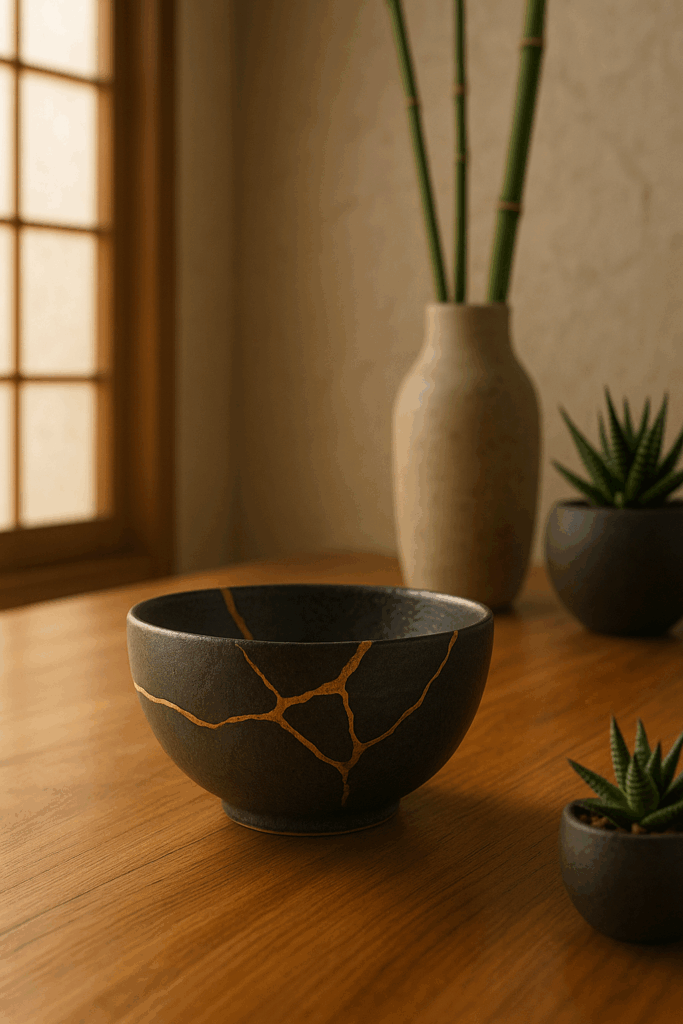
Welcome to Yūgen Takegami Kintsugi, where imperfection is transformed into quiet beauty, where each piece is a meditation on endurance and grace, rooted in the timeless Japanese art of kintsugi.


Welcome to Yūgen Takegami Kintsugi, where imperfection is transformed into quiet beauty, where each piece is a meditation on endurance and grace, rooted in the timeless Japanese art of kintsugi.
Yūgen Takegami Kintsugi was born from a lifelong journey through Japanese martial arts and the appreciation of imperfection. “Yūgen” speaks to a profound grace that can’t be explained — only felt. “Takegami” is the spirit of the bamboo: flexible, humble, enduring.
Every piece I create channels these values. At the heart of this practice lies kintsugi (金継ぎ), which means “golden joinery.” More than a method, it is a philosophy. Rooted in 15th-century Japan, kintsugi reflects the belief that beauty exists not in perfection, but in the endurance of what was once broken. It teaches us that our fractures are part of our history, and by embracing them with care, we transform them into strength.
Through this art, I do not simply mend pottery; I celebrate its life. Each vein of gold becomes a path of healing, and each piece holds the story of time, wear, and renewal. My work is guided by the principle that true beauty lies in what has survived and carries its story openly.
Whether it is a delicate plate or a humble bowl, each repaired item from Yūgen Takegami Kintsugi is a symbol of resilience — and a quiet invitation to honour your own journey.
Kintsugi (“golden joinery”) is a centuries-old Japanese art that involves repairing broken pottery using urushi lacquer mixed with powdered gold, silver, or platinum. The process doesn’t seek to hide the damage — it illuminates it. Each golden line represents not a flaw, but a story; not damage, but survival. In essence, kintsugi is a reflection of our human experience: fractured, healed, and made more beautiful through both.
History and Meaning
The roots of kintsugi date back to the late 15th century, during Japan’s Muromachi period. Legend tells that a Japanese shogun, displeased with how his broken teacup was repaired with unsightly metal staples, asked his craftsmen to find a more aesthetically pleasing solution. What followed was the birth of kintsugi — a process that respected the integrity of the object while transforming it into something more.
Kintsugi embodies the philosophy of wabi-sabi: the beauty of imperfection, impermanence, and the incomplete. It reminds us to cherish flaws and transience, to embrace the aging of time and the uniqueness of every crack. In a world that often prioritizes perfection and disposability, kintsugi is a poetic resistance to forgetfulness and waste.
Our Process
At Yūgen Takegami, each repair is a meditative act. We honour both traditional techniques and contemporary adaptations. Depending on the piece, we may use genuine urushi lacquer layered with 24k gold powder, or food-safe resin infused with brass dust for a modern, resilient finish.
Every repair is a slow and intentional journey. The object is first carefully cleaned and assessed. Fragments are reunited with care. Layers of lacquer are patiently applied and cured. Finally, the golden seams are burnished by hand to reveal their final form — glowing, graceful, and unmistakably unique.
No two pieces are the same. The repair lines are never repeated, and each tells its own story. The final creation is not just pottery — it is a narrative, a sculpture of time, and an offering of stillness in a fast-moving world.
Yūgen Takegami Kintsugi was born from a lifelong journey through Japanese martial arts and the appreciation of imperfection. “Yūgen” speaks to a profound grace that can’t be explained — only felt. “Takegami” is the spirit of the bamboo: flexible, humble, enduring. Every piece I create channels these values.
At the heart of this practice lies kintsugi (金継ぎ), which means “golden joinery.” More than a method, it is a philosophy. Rooted in 15th-century Japan, kintsugi reflects the belief that beauty exists not in perfection, but in the endurance of what was once broken. It teaches us that our fractures are part of our history, and by embracing them with care, we transform them into strength.
Through this art, I do not simply mend pottery; I celebrate its life. Each vein of gold becomes a path of healing, and each piece holds the story of time, wear, and renewal. My work is guided by the principle that true beauty lies in what has survived and carries its story openly.
Whether it is a delicate plate or a humble bowl, each repaired item from Yūgen Takegami Kintsugi is a symbol of resilience — and a quiet invitation to honour your own journey.
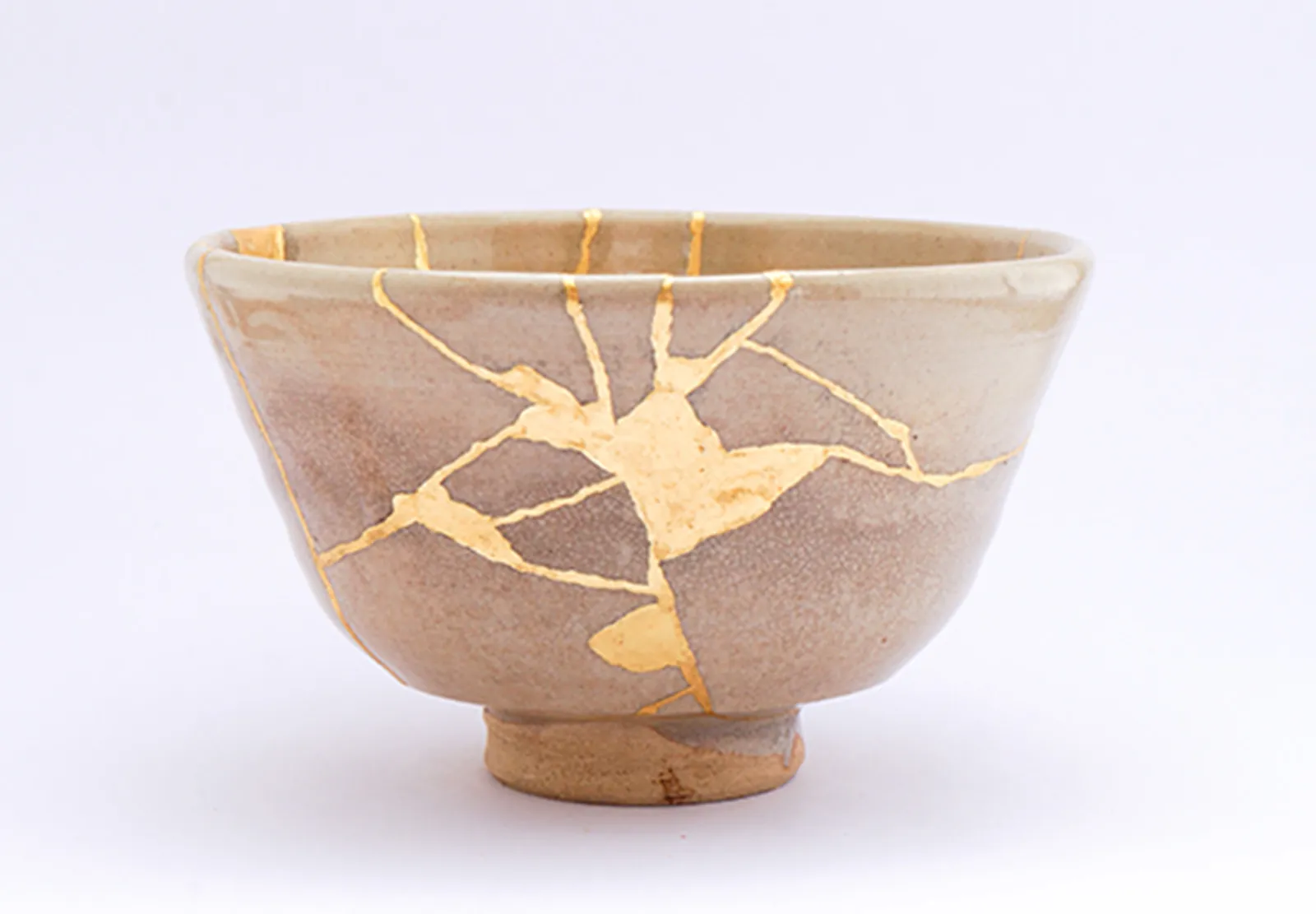
“Harmony in Gold” embodies the spirit of resilience, revealing that brokenness, when mended with care, can achieve a deeper beauty and storied character. This bowl invites viewers to reflect on life’s imperfections as sources of strength and grace.
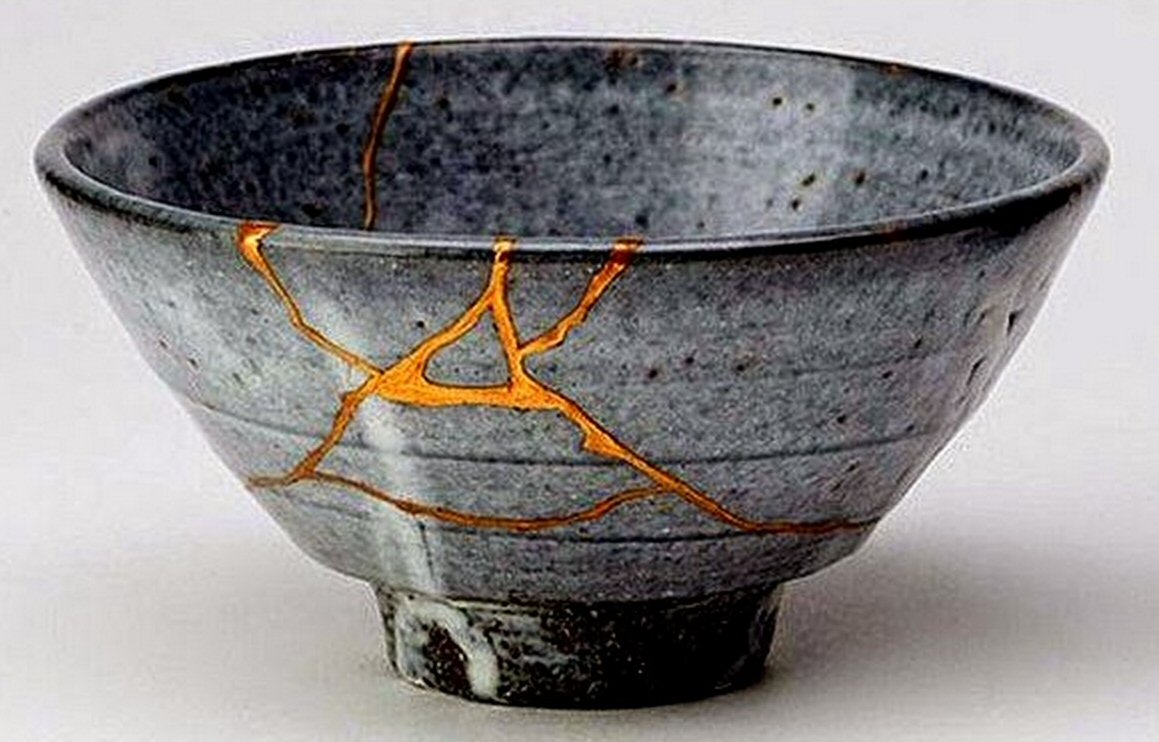
“Midnight Veins” is a masterfully restored kintsugi bowl in our Yūgen Takegami collection, where the deep, speckled slate glaze evokes the quiet mystery of twilight. Cracks that once marred its form now shimmer with gold lacquer, tracing an almost constellation‑like pattern across the ceramic surface.
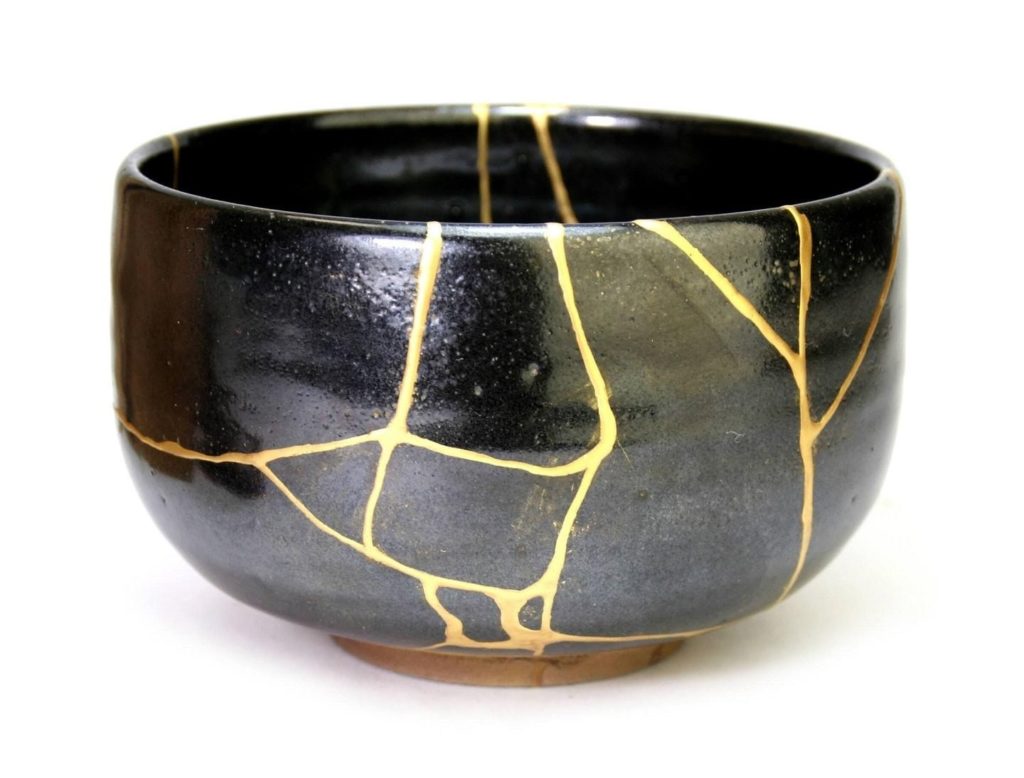
“Nocturne Bloom” is a striking example of kintsugi artistry in our Yūgen Takegami collection. This low, rounded bowl features a deep, midnight‑black glaze that appears to shift in tone under changing light. Its repaired fractures bloom across the surface like delicate golden petals—revealing a hidden elegance within what was once broken.
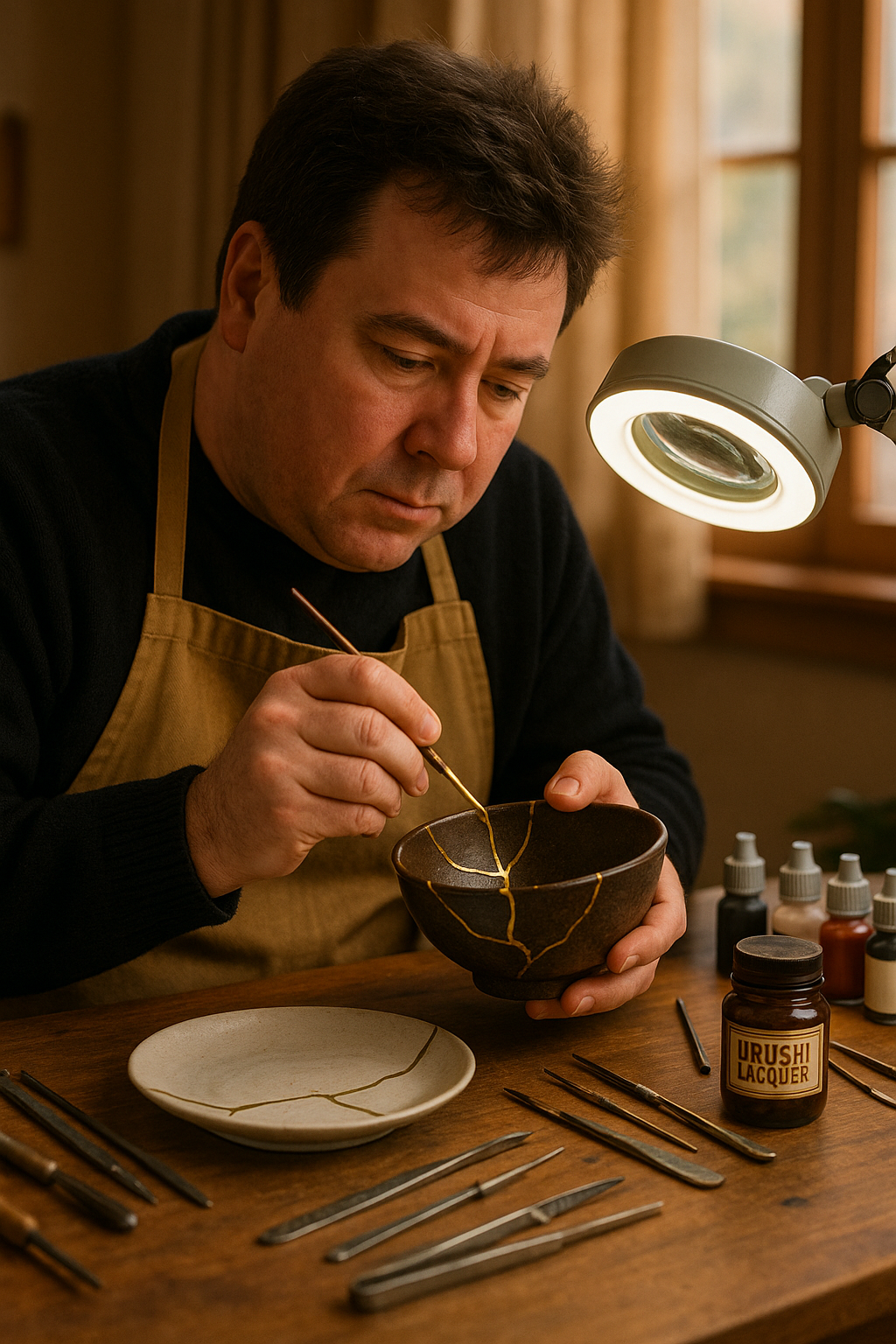
Favourites repaired
Everyone has pieces that are sentimental and have value to yourself. Don’t throw it away, just gather all the pieces and place them in a box. Contact me and I’ll look at how we can bring it back and show the life of the piece so you can enjoy it for many years to come.
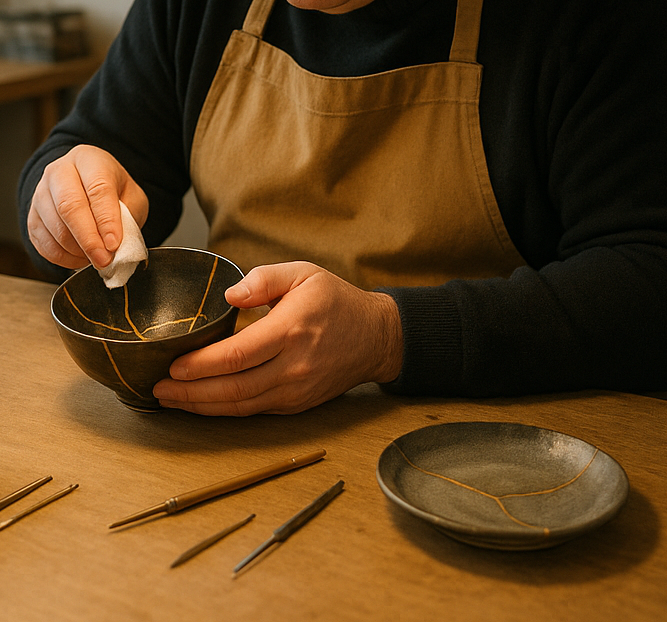
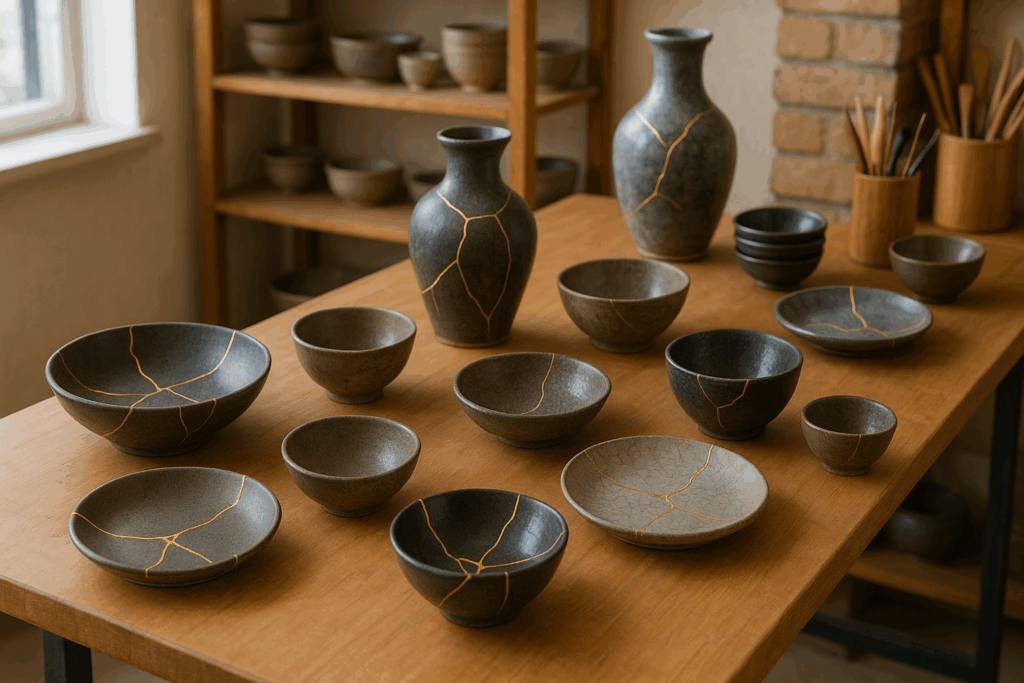
Common Questions:
Where do you ship? Australia-wide and international. Shipping calculated at checkout.
Can I eat from it? Most items are decorative, but food-safe pieces are noted. If a food safe item is needed, then more time will be needed to repair the piece, as food safe repair options will need to be applied.
Microwave? All items cannot be used in a microwave! As gold and silver are used it will spark as well as the thermal shock and would most likely re-break the piece. Best to avoid.
Can I wash it? Handwash only. Avoid microwave, dishwasher, and soaking. Avoid prolonged soaking and very hot/acidic foods. For light serving or display.
What gold do you use? We use genuine 24k gold and silver or food-safe brass powder, depending on the piece.
Do you take commissions? Yes. Contact us for custom repair or personal kintsugi projects.